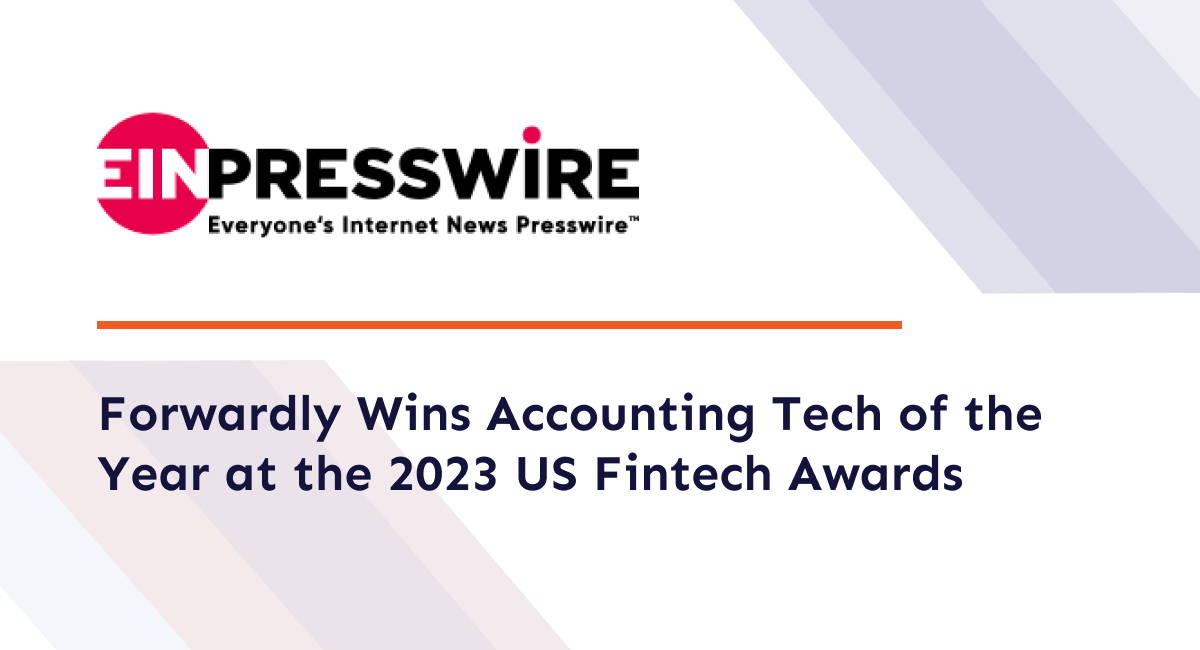Determining Your Break-Even Point

However, profit’s a deceptive metric for success that often only gives you part of the picture. For example, sales are recorded on a profit and loss statement, regardless of whether the customer has paid for them yet.
While profit is simply the difference between what it costs you to produce and sell a good or service and what you sell it for, your break-even point tells you how much money you need to make in order to cover your operating costs.
Thankfully it’s easy to determine your company’s break-even point. The first step is monitoring your cash flow using tools like ForwardAI. Armed with this information, you can determine just how close you are toward being cash flow positive and having the working capital you need to reinvest in growth.
But first, what is a break-even point?
Put simply, the break-even point (BEP) is a financial indicator that demonstrates when your company’s net profits match its expenses. “When” — in terms of the concept of timing or at what point your income is equal to your costs.
The thinking here is that if you when you get there, you’ll also know more about how you got there. More importantly, you’ll have a better idea of what to do to have your profits consistently surpass your expenses.
Your break-even point fluctuates with your costs, including start-up costs, fixed assets, and day-to-day purchases. The more you spend to do business, the higher your break-even point to stay in business. Therefore, most companies calculate their break-even point monthly or annually — or both. This helps you orient your business toward higher profits and lower expenses, as they’re the determinants behind whether or not you’re “breaking even.”
Factors for determining your break-even point
Every company’s break-even point is different. If you’ve made major capital investments in your company, you’ll have to earn higher profits to overcome these costs. Or, if you have high raw materials and labor costs, you might have a long way to go before you hit your break-even point. Alternatively, if your business doesn’t require much of either, you’ll hit your break-even point as long as you’re generating enough revenue and charging the right prices for your services.
There are still a few core tenets behind a break-even point calculation, even though each figure is different. These key metrics influence how you determine your break-even point. Your best bet is to create a sales forecast before you dive into a break-even point forecast, as that will give you insights into each of the metrics below.
Average per-unit cost
Your average per-unit cost is the amount of money it costs for you to make a single unit (product or service, depending on your business). You’ll typically want your per-unit cost to be as low as possible if you want to maximize your profit margin.
Average per-unit sales price
The average per-unit sales price — also known as per-unit revenue — is the money you receive for every unit you sell. In short, it’s the amount you charge on every sale (or invoice). This stat doesn’t account for taxes, labor, or raw materials costs. It’s just what you take in for every item you sell. Be sure to account for sales and discounts, as these will lower your per-unit sales price. And if you sell more than one item, you’ll have to calculate an average price across all products.
Fixed costs
Fixed costs are the expenses you regularly incur over a set period of time, like a month, quarter, etc. This includes raw materials, rent/mortgage, payroll, taxes, and any other expenditure that you can count on every month. Fixed costs, also known colloquially as overhead, or the cost of doing business, are recorded in your business’ income statement. You’ll want to make sure your fixed costs are low if you want to make it easier for you to hit your break-even point, since your overhead eats into your profits.
Determining your break-even point
When you determine your break-even point, you’re basically asking yourself whether you can sell enough units to cover the costs that go into producing them. In short form, your break-even point equals your fixed costs divided by the difference between your per-unit sales price and per-unit costs.
Calculating a Break Even Point: An Example
Tara’s Teddy Bears is introducing a line of cute, cuddly mini bears. But what will it take to break even each month for this line alone?
Here’s how Tara worked out her average cost per unit. Based on an estimate from her manufacturer, it will cost $500,000 to produce 1 million tiny teddy bears. Running the formula, this means the average cost per unit is 50¢.
Average per-unit cost = total production costs ÷ number of units produced
$500,000 total production costs÷ 1,000,000 bears = 50¢ per bear
In this example, you’ll be able to see how pricing makes a difference in the ultimate break-even point.
- If she charges $10 a bear, she’ll earn $10,000 in revenue for every 1,000 bears she sells.
- If she charges $15 a bear, she’ll earn $15,000 in revenue for every 1,000 bears she sells.
To get to her break-even point for her new line of bears, Tara runs the numbers, based on $1,000 in monthly fixed costs using the formula below:
Break-even point = fixed costs÷ (per unit price – per unit cost)
- $1,000 ÷ $9.50 = $105.26
With this break-even point, Tara has to sell more than 10 bears at $10 each month in order to cover costs. - $1000 ÷ $14.50 = $68.97
With this break-even point, Tara only needs to sell more than 4 bears a month at $15 each in order to cover costs.
As this isn’t her first product line and she knows that her other product lines all sell 100 units or more each month, she can see that she has the freedom to charge either $10 or $15. Of course, she’ll examine other market factors as well and look at her break-even point for her entire company as well.
Other considerations when using your break-even point as a KPI
From the example above, which features one product line, it’s easy to see how a lot of generalizations and assumptions are made to get to an overall average for every product a business produces. Thus, measuring a break-even point a key performance indicator (KPI) is easier for businesses with fewer product and services.
In its simplest calculation, a break-even point lumps all the fixed costs together. It simply shows you the numbers you need to hit. It doesn’t account for verifying market demand, which is part science and part leap of faith in the first place. Your break-even point is like anything else, it doesn’t exist in a vacuum.
The best thing you can do is understand how it was calculated, what it means and how to apply it. For instance, if Tara knows there’s the potential for teddy bear stuffing costs to increase, she might opt for charging $15 a bear to help hedge her bets. Or if she has a sale each year, she knows she has the margin to offer a sale price of $10.
Your break-even point and cash flow
Because there are so many moving parts to a business, monitoring your cash flow and the factors that affect it gives you the perspective you need to make future projections and better-informed decisions.
Cash flow analysis that includes a cash flow statement and cash flow forecast helps you compare things like the timing of your income versus the timing of your expenses. It can show you if you’ve got more debt than equity and highlight a range of indicators, ratios and variables.
Hitting your break-even point is only one step toward being cash flow positive and staying that way. It’s simply one piece of the puzzle. However, a cash flow forecast and analysis from ForwardAI gives you a way to put all the pieces together — using your current financial information.
If your business uses QuickBooks Online, you can get started today.
| Try our FREE cash flow forecasting tool designed for small businesses. Stop wasting time crunching numbers and start forecasting in minutes with Forwardly – all you need to get started is to log into your accounting software. Sign up now for free. |
The information in this article is not financial advice and does not replace the expertise that comes from working with an accountant, bookkeeper or financial professional.
Image: GraphicStock.


